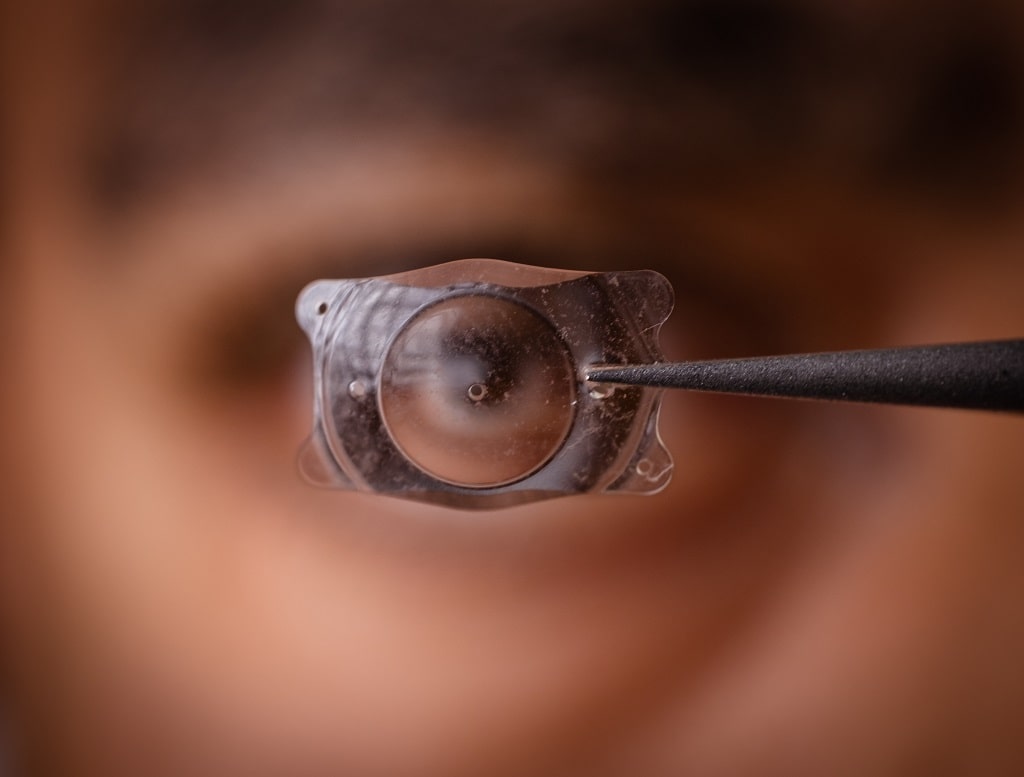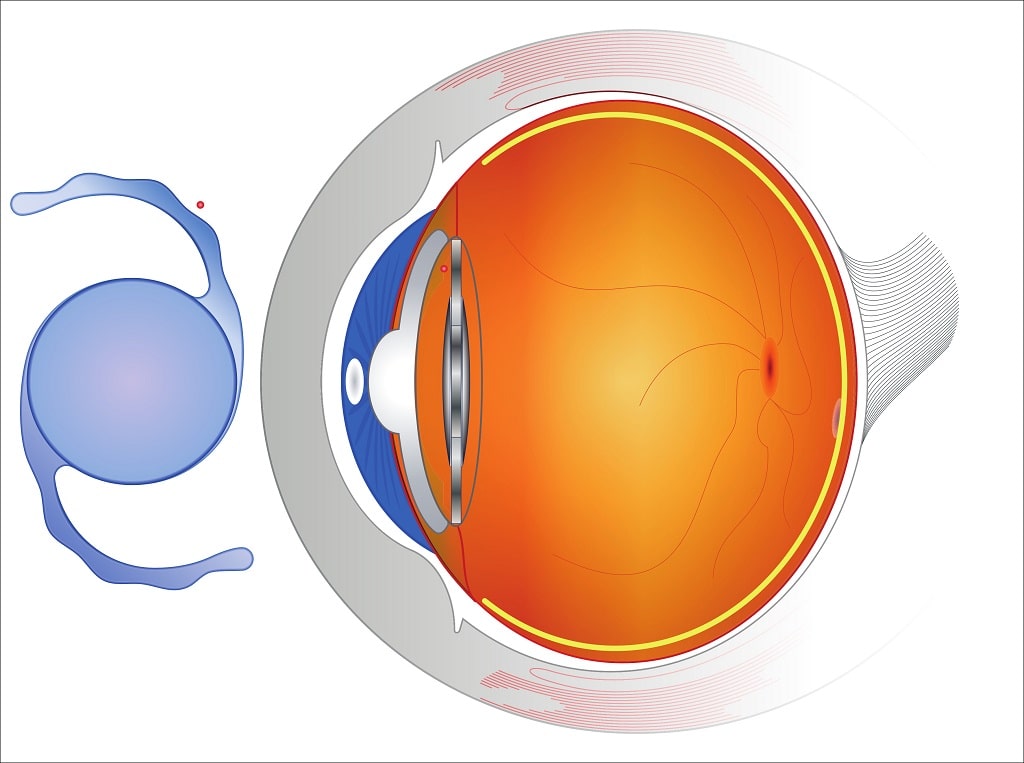
Updated: August 01, 2023

When it comes to eye surgery, many options are available to patients looking to improve their vision. Two of the most popular types of eye surgery are ICL (implantable collamer lens) and RLE (refractive lens exchange).
Understanding the two helps people make an informed decision when considering which type of surgery is right for them. In this article, we will outline the differences between RLE and ICL eye surgery so that you can make the best choice for your vision needs – especially for Discover Vision patients considering RLE or ICL surgery in Kansas City.

ICL surgery, or implantable collamer lens surgery, is a potential vision correction option if you suffer from hyperopia, astigmatism, and severe myopia.
An implantable collamer lens is placed into the eye during the vision correction procedure. The lens works by bending light entering the eye and focusing it directly on the retina, thus eliminating the need for glasses or contacts. The procedure is typically performed on an outpatient basis and requires only a local anesthetic.

During the first few days after the surgery, it is common to experience blurred vision, light sensitivity, and some discomfort. A protective eye shield will be supplied to wear at night for the first few nights after surgery.
In addition, doctors will typically prescribe eye drops to reduce inflammation, which may last up to four weeks after the surgery. Patients may also experience a mild burning sensation in the eye, which should subside after a few days.
It is essential to follow the doctor’s instructions for post-operative care, which may include avoiding strenuous activities, refraining from rubbing the eyes, and taking medications as prescribed. In most cases, patients will see a dramatic improvement in vision immediately and full recovery can take up to two months.
RLE also corrects nearsightedness, farsightedness (distance vision), and astigmatism. However, refractive lens exchange surgery is particularly beneficial and recommended to patients over age 40 because it bypasses age-related vision changes such as presbyopia and early cataracts.

Refractive Lens Exchange is an outpatient surgical procedure used to correct vision and reduce the need for glasses or contact lenses. It’s also a presbyopia surgery option.
During the RLE procedure (also called a clear lens exchange), a surgeon replaces the eye’s natural lens with an artificial intraocular lens. This natural crystalline lens is customized to the patient’s individual refractive error, allowing them to see clearly with minimal or no dependence on corrective lenses.

Immediately following the surgery, patients may experience some degree of discomfort, including burning, itching, and redness of the eyes. These symptoms usually subside within a few days. Additionally, it’s normal to experience blurry and fluctuating vision for the first few weeks as the eyes adjust to the new lenses. The recovery time for RLE surgery depends on the individual, but most patients notice a significant improvement immediately and functional vision the day after surgery.
Some may experience perfect vision within the first week, while others may take up to six weeks to fully recover. Following your doctor’s post-operative instructions is essential to ensure a safe and successful recovery, such as wearing protective sunglasses to shield your eyes from the sun and keeping them moist with artificial tears.
Having an examination and discussing your goals with the surgeon and team will clearly define what procedure is best for your needs. RLE is typically used for middle-aged adults who want better vision, and the ICL procedure is used for young to middle-aged adults who are short-sighted (with or without astigmatism).
If you want a surgical procedure that does not alter your cornea but helps your vision, then ICL is suitable. However, if your natural lens has weakened, RLE is the better option. Both treatments are viable options for those who want improved vision and can relieve the need for eyewear.
Overall, ICL and RLE surgery are viable options for correcting vision. While ICL provides rapid recovery. RLE provides for a full range of vision and the patient will avoid having to undergo cataract surgery in the future. Ultimately, the decision over ICL vs. clear lens exchange should be made in consultation with a qualified eye care professional who can assess your situation and provide the best vision correction procedure for your needs. Contact us to schedule a consultation.